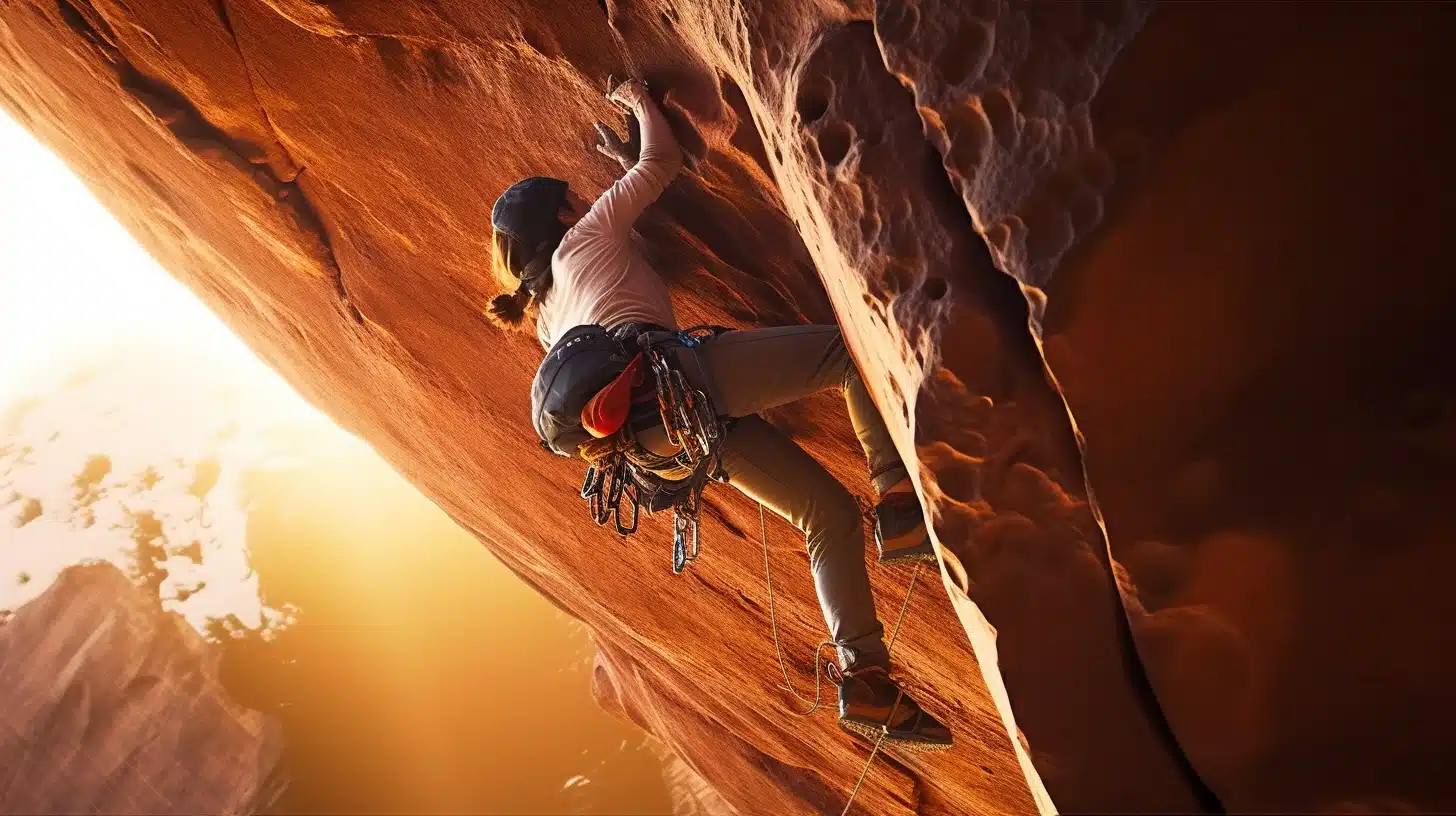Table of Contents
ToggleIntroduction
As a professional rock climbing expert with years of experience, I can attest to the challenges of overhang climbing. It’s a form of climbing that requires a high level of technique and balance, and it can be easy to fall into the trap of relying on brute strength alone. In this blog post, I’ll share my tips and techniques for mastering overhang climbing, as well as the benefits of incorporating it into your training routine.
Why overhang climbing is a challenging but rewarding skill to master
Overhang climbing is often described as one of the most challenging forms of climbing, and for good reason. When you’re scaling a wall that slopes towards you, you have to rely on your arms and back muscles to keep you upright and move you forward. But there’s more to it than just strength – you also need to use your legs and feet to find holds and maintain balance.
One of the reasons why overhang climbing can be so rewarding is because it forces you to push yourself out of your comfort zone, both physically and mentally. When you’re hanging upside down or perched on a small foothold, your mind can start to play tricks on you. It takes focus and mental strength to stay calm and maintain your composure.
Benefits of incorporating overhang climbing into your training
If you’re serious about improving your overall climbing ability, incorporating overhang climbing into your training is a must. Here are just a few of the benefits:
- Build strength: Overhang climbing is one of the best ways to build upper body and core strength. By working your arms, back, and abs in new ways, you’ll see improvements in your overall strength and endurance.
- Develop technique: Overhang climbing requires precise footwork and body positioning, which can help you develop better technique overall. As you work on your overhang climbs, you’ll find that your balance and coordination improve.
- Boost confidence: Mastering an overhang climb can be a huge confidence booster. Once you’ve tackled a challenging climb with good technique, you’ll feel more confident in your abilities as a climber overall.
In conclusion, overhang climbing is a challenging but highly rewarding skill to master. By focusing on technique, incorporating leg techniques, and mastering additional moves, you can improve your ability to climb overhangs. And by incorporating it into your training routine, you can build strength, develop technique, and boost your confidence as a climber.
Importance of Footwork in Overhang Climbing
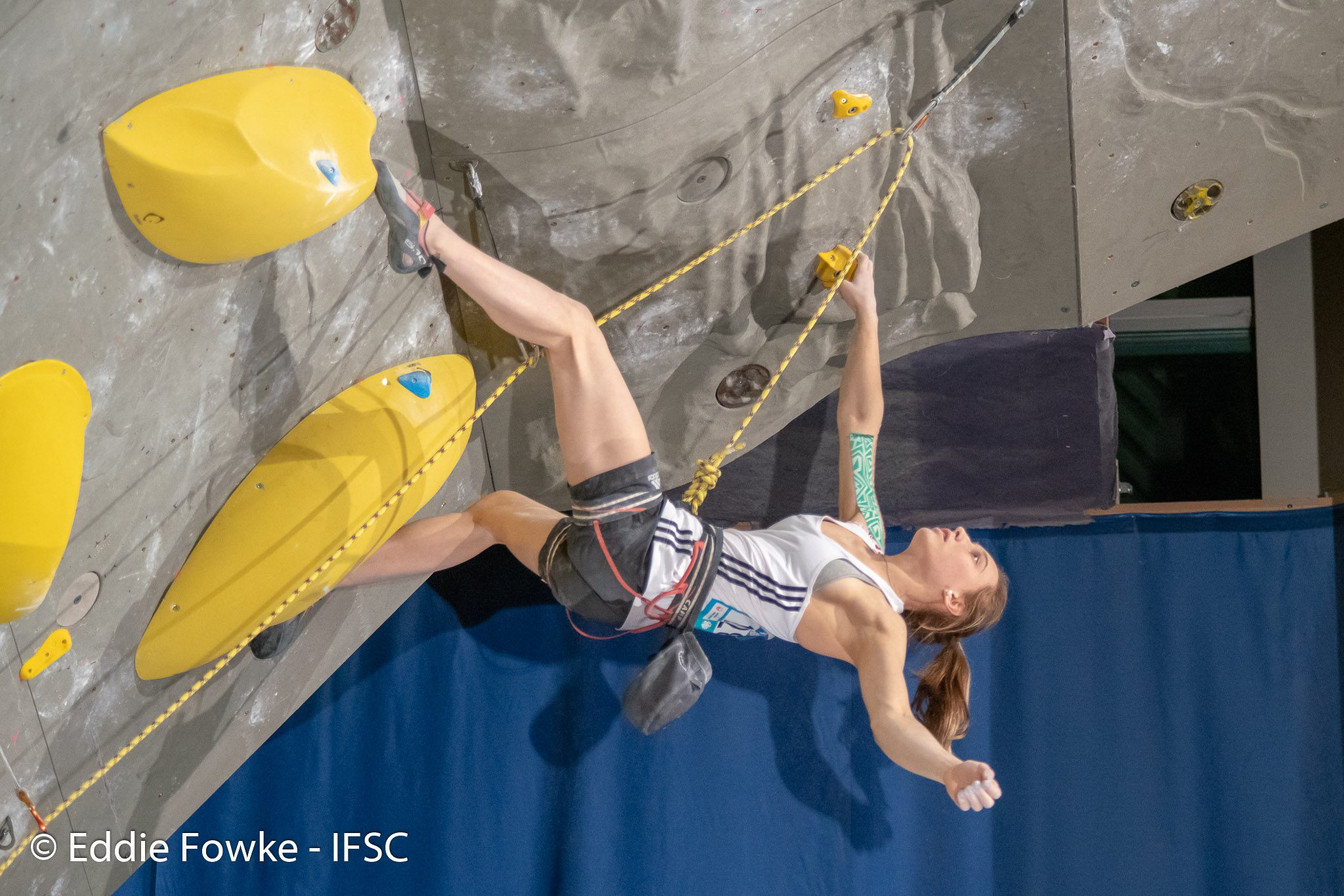
As an experienced and helpful Master Climber, I cannot overstate the importance of proper footwork in overhang climbing. It’s not just about using your arms and back muscles to pull yourself up the wall – your legs and feet play a crucial role in finding holds and maintaining balance. Here are some tips and techniques for improving your footwork on overhang climbs:
The role of footwork in overhang climbing
Overhang climbing is all about balance, and your feet are the key to keeping yourself upright. By finding footholds and using precise foot placement, you can reduce the strain on your upper body and conserve energy for the challenging moves ahead.
Importance of scanning the wall for footholds
When you’re climbing an overhang, it’s important to scan the wall constantly for footholds. These might not always be easy to spot at first glance, but a trained eye can often pick up on subtle features and textures that can provide valuable purchase for your feet. Don’t be afraid to take your time and really study the rock face before making your next move.
Techniques for effective foot placement
One technique I like to use when climbing overhangs is edging – pushing down with my toes and pulling in with my heels to get a solid grip on small holds. Another effective technique is toe-hooking, in which you use your toes to grip the edge of a hold and leverage your body upwards.
Of course, every climb is different, and knowing when to use these techniques – and when to rely more on upper body strength – comes with practice and experience. But by focusing on your footwork and getting comfortable with different techniques, you’ll be able to tackle even the most challenging overhangs with confidence.
In summary, footwork is an essential part of overhang climbing, and mastering it can help you conserve energy, reduce strain on your upper body, and improve your overall technique. By scanning the wall constantly for footholds and practicing effective foot placement techniques, you can master overhang climbs and take your climbing to new heights.
Static Climbing Technique on Overhangs
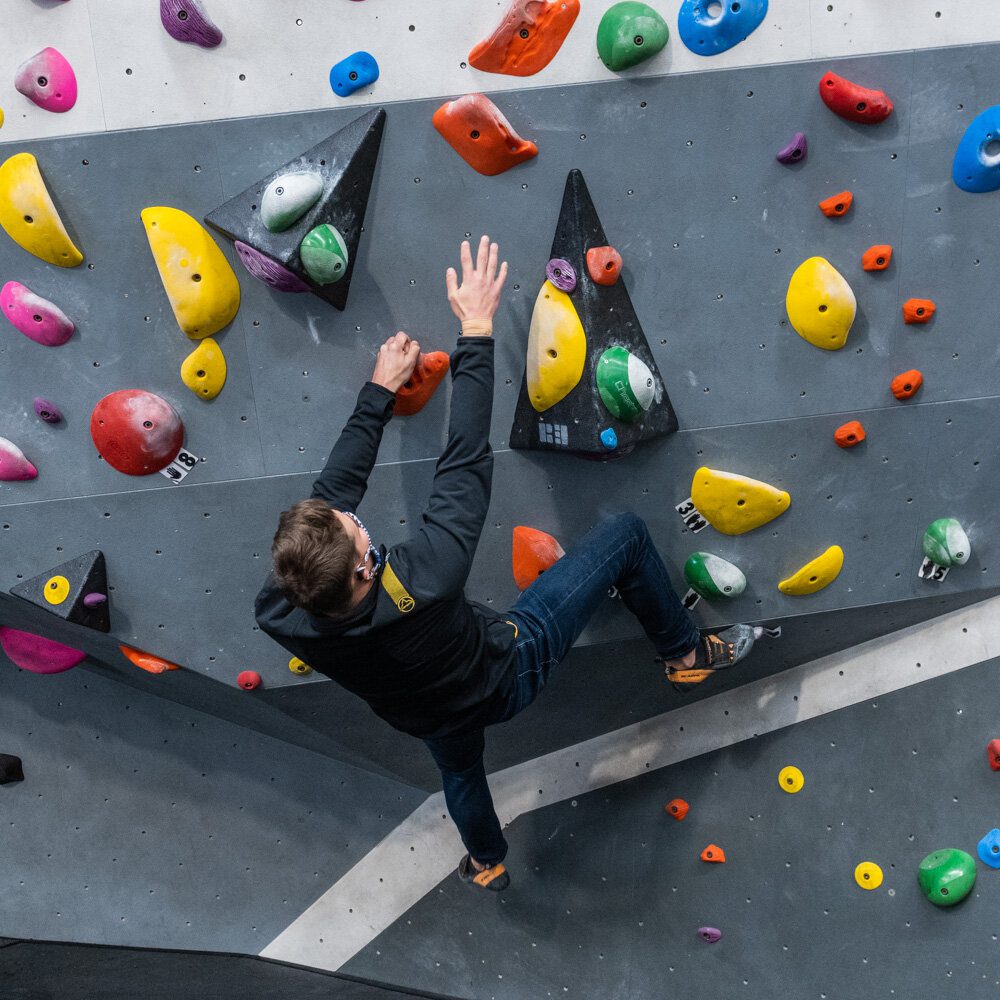
As an experienced and helpful Master Climber, I have found that learning the static climbing technique is essential for any climber who wants to conquer overhangs. While learning to move dynamically is important, relying too much on this technique can lead to lazy habits and actually hinder your progress on overhangs.
Benefits of using static climbing technique on overhangs
The static climbing technique involves controlled, deliberate movement and precise footwork, allowing you to maintain balance and control on overhangs. This technique conserves energy by reducing the need for dynamic movements that can quickly tire out your muscles. By mastering the static technique, you can climb more efficiently and confidently on overhangs.
How to practice and improve static climbing technique
One effective way to improve your static climbing technique is by practicing climbing routes with gradual overhangs. Start with smaller angles and gradually work your way up to steeper angles. As you climb, focus on placing your feet precisely and using opposing forces to maintain balance. Another effective technique is to climb without using hands, relying only on your feet and legs to find holds and move up the wall.
Additionally, it can be helpful to watch other climbers who excel at static climbing to observe their footwork and techniques. Tackling challenging overhangs with a partner or a skilled climbing coach can also be helpful in improving your static technique.
In conclusion, mastering the static climbing technique is a key component of overhang climbing. By practicing precise footwork and controlled movements, climbers can conserve energy and confidently conquer even the most challenging overhangs. Keep these tips in mind as you train and practice, and soon you’ll be reaching new heights in your climbing skills.
Dynamic Climbing Technique on Overhangs
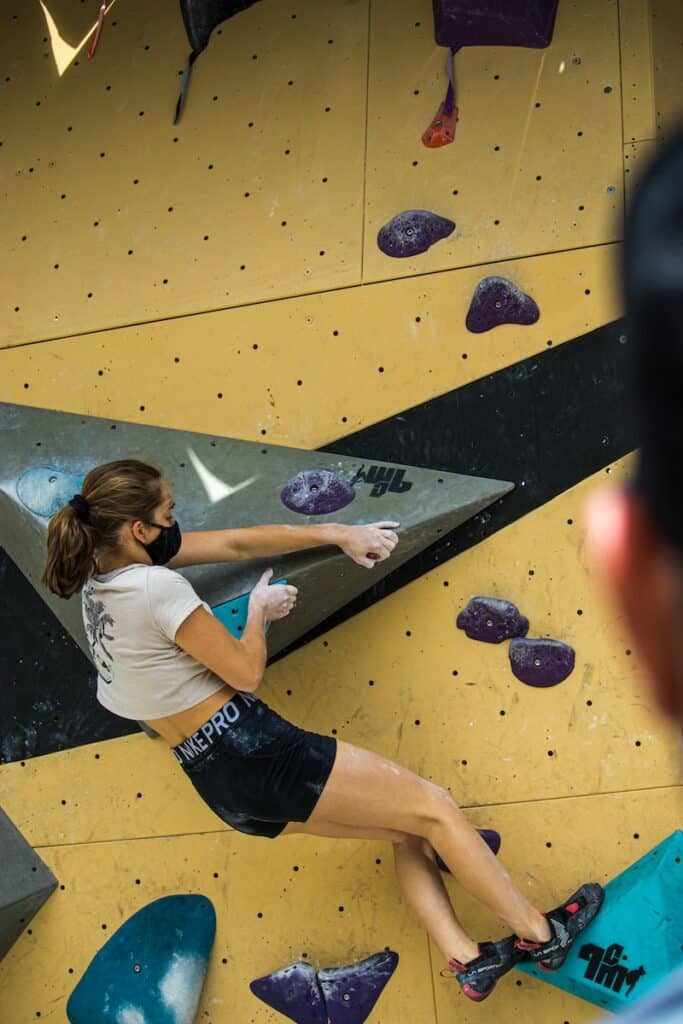
As an experienced and helpful Master Climber, I know that the dynamic climbing technique is a crucial skill to have when it comes to climbing overhangs. Dynamic movements involve using momentum and explosive power to move up the wall quickly. While it’s important to know when to use static technique, incorporating dynamic climbing into your training can help you conquer even the most challenging overhangs with ease.
The importance of dynamic climbing technique on overhangs
Dynamic climbing is especially crucial when it comes to steep, overhanging routes that require a lot of power and momentum. On these types of climbs, static technique can be less efficient, causing you to tire out quickly with each move. By incorporating dynamic technique, you can use your body’s natural momentum to your advantage, allowing you to move more fluidly and save energy for longer climbs.
How to incorporate dynamic climbing into your training
One effective way to incorporate dynamic technique into your training is by practicing boulder problems that require explosive movements. These problems often involve short, intense sequences of moves that require quick reactions and power. As you progress, you can move on to harder boulder problems and more challenging routes on the wall.
Another way to improve your dynamic technique is by incorporating plyometric exercises into your training. Plyometrics involve explosive movements like box jumps, jump squats, and hurdle jumps that can help improve your power and reactive strength. By doing these exercises regularly, you can build the explosive power needed for successful dynamic moves on the wall.
In conclusion, mastering both static and dynamic climbing techniques is essential for success on overhangs. By practicing precise footwork, controlled movements, and explosive techniques, climbers can improve their skills and conquer even the most challenging routes. As a professional climbing expert, I encourage all climbers to incorporate both techniques into their training regimen for the best results.
Three-Dimensional Movement in Overhang Climbing

As a professional rock climbing expert, experienced & helpful master climber, I can tell you that overhang climbing requires more than just the basic technique of pushing your toes on holds. There are many other techniques and maneuvers that can aid your climbing, particularly in overhangs. In this blog post, I’d like to talk about three-dimensional movement, also known as multi-directional movement, in overhang climbing and how to approach it.
How to approach three-dimensional movement
Moving in three dimensions on an overhanging wall requires a different mindset than you might be used to. You can’t just focus on moving up; you need to pay attention to where you can move left or right as well. One approach is to scan the wall for footholds continually. Look for places where you can push off with your feet or use them to help stabilize your body.
Another important aspect of three-dimensional movement is footwork. To climb overhangs successfully, you need to have precise footwork and be comfortable moving your feet around. Don’t be afraid to get those feet up high! Footwork and technique on an overhanging wall can often be very technical, so take your time and concentrate on placing each foot in the right spot.
Strategies for navigating overhangs with multi-directional movements
One strategy for navigating an overhang with multi-directional movements is to start low on the wall and work your way up gradually. This will help you get a feel for the wall and where you can move. As you climb higher, look for places where you can switch directions or make lateral movements.
You can also try using what’s known as a “drop knee” move. This move involves dropping one knee down and pivoting your body in a different direction. It can be an effective way to change directions quickly and efficiently on an overhanging wall.
In conclusion, climbing overhangs requires a wide variety of skills, including dynamic climbing technique, precise footwork, and the ability to navigate multi-directional movements. By incorporating these techniques into your training, you can improve your climbing skills and conquer even the most challenging routes. As an experienced and helpful master climber, I encourage all climbers to focus on mastering three-dimensional movement and exploring new strategies for navigating overhangs.
Thinking Outside the Toe Box: Unconventional Footwork Techniques

As a professional rock climbing expert, I want to share some of my expertise on unconventional footwork techniques that can help you in overhang climbing. Instead of just relying on the basics of putting your toes on holds and pushing, there are other maneuvers that you can use to aid your climbing. Let’s dive into these techniques and how to apply them effectively in overhang climbing.
The basics of unconventional footwork techniques
In rock climbing, there is a slew of techniques that can aid your climbing, especially in overhangs. Learning different methods can help you change the direction that your feet are applying force, rather than just pushing down. Here are some basic unconventional footwork techniques:
- Back-stepping – turning your back to the wall and pressing your heel into the hold behind you
- Smearing – using the rubber on your climbing shoes to grip onto a flat surface rather than using a hold
- Flagging – using one leg to balance yourself while the other leg pushes against the wall
- Toehooking – wrapping your toes around the hold and pulling yourself up
How to apply these techniques effectively in overhang climbing
Overhang climbing requires three-dimensional movement and technique, as the climbs often move in a more three-dimensional way. When applying these unconventional footwork techniques, remember that it’s crucial to look for footholds continually and have precise footwork. Here are some tips on using those footwork techniques:
- Back-stepping – start by finding a hold that is placed higher than your chest; then, while standing on a lower hold, turn your back to the wall and press your heel into the hold behind you.
- Smearing – you can use this technique when there is no hold to grab onto. You will move slowly and need to use the rubber on your climbing shoes to grip onto a flat surface.
- Flagging – you can use this technique when there are no footholds on the wall by utilizing one leg to balance yourself while the other pushes against the wall.
- Toehooking – this is a more advanced technique that requires strong foot and leg muscles and is mostly used when there are limited or no footholds; wrap your toes around the hold, pull yourself up, and use it for balance.
In conclusion, unconventional footwork techniques are vital in overhang climbing. You need to mix these methods with the conventional ones to achieve success in climbing. Keep in mind that these techniques require practice and patience before mastering them, but you will definitely notice an improvement in your climbing with determination.
Efficiency in Overhang Climbing
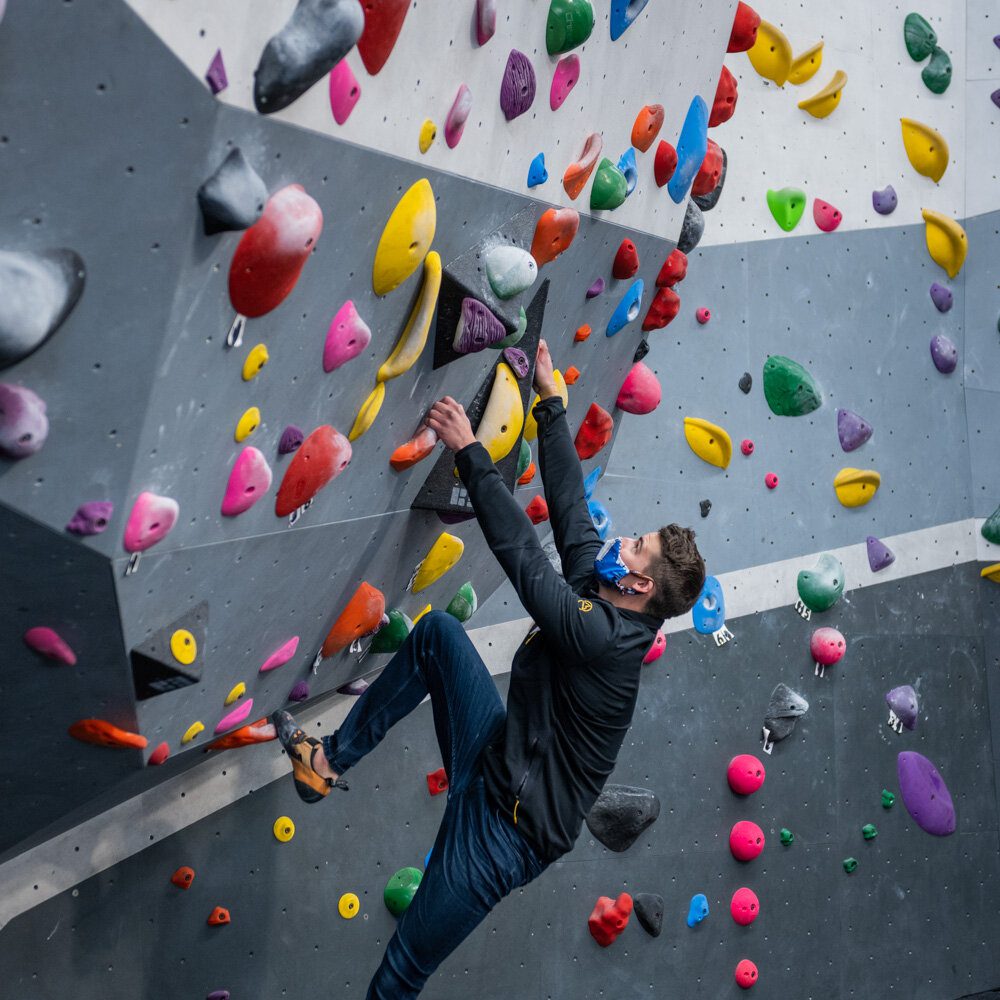
As a professional rock climbing expert with years of experience, I understand the importance of efficiency in overhang climbing. To climb overhangs successfully, it’s not just about being strong and fearless; it’s finding the balance between power and technique. In this blog post, I’ll share my strategies for climbing more efficiently on overhangs.
Strategies for climbing more efficiently on overhangs
One of the most crucial aspects of efficiency in overhang climbing is pacing. Overhangs require a lot of energy, and you don’t want to burn all your energy in the first few moves. Take your time to find the best footholds and make precise movements. When you rush, you’ll make more mistakes and use more energy.
Another essential aspect is body positioning. You don’t want to be hanging from your arms all the time as that will use up a lot of energy. Instead, use positioning techniques like heel hooking, toe hooking, flagging, and smearing to help balance your weight and take some pressure off your arms.
Footwork is another critical factor in overhang climbing efficiency. Using your toes to grip onto holds isn’t always the best option. Utilize unconventional footwork techniques like back-stepping, bicycling, and figure 4 to change direction and find new footholds. This way, you won’t overuse your toes or strain your calf muscles.
The role of footwork, body positioning, and pacing in efficiency
To highlight the importance of these strategies in overhang climbing efficiency, let me share a personal anecdote. A few years ago, I attempted a notoriously challenging overhang climb that many experienced climbers had tried but failed. My technique was right, but my pacing was off. I used too much energy too fast, and by the time I got halfway up, my arms were shaking uncontrollably. I had to call it quits and descend.
I came back a few weeks later, and I implemented these strategies for efficiency. I took my time, used proper body positioning techniques like heel hooking, and changed up my footwork using back-stepping and figure 4. As a result, I climbed the route with ease and didn’t feel exhausted at the end.
Wrapping up, efficiency in overhang climbing is critical, and these strategies are essential to make it happen. By pacing yourself, using proper body positioning techniques, and utilizing unconventional footwork, you’ll be on your way to reaching new heights in overhang climbing.
Building Strength and Endurance for Overhang Climbing

As a professional rock climbing expert with years of experience, I always preach that a critical factor in successful overhang climbing is building strength and endurance. Overhangs require a lot of upper-body strength and core stability, and without proper training, it’s easy to burn out quickly. In this blog post, I’ll share my strategies for building strength and endurance for overhang climbing.
How to train for strength and endurance in overhang climbing
The best way to train for overhang climbing is to incorporate specific exercises that target the muscles used during the climb. Upper-body strength exercises like pull-ups, rows, and shoulder press can significantly improve strength when climbing difficult overhangs. For core stability, exercises like planks, deadbugs, and Russian twists are recommended to maintain a consistent body position while on the wall.
It’s essential to train both endurance and strength. Endurance training can be as simple as climbing up and down a route repeatedly or doing laps on an easy to moderate overhang. The key is keeping the heart rate up while also increasing muscle endurance.
Recommended exercises and routines
Here are some recommended exercises and routines to help build strength and endurance for overhang climbing:
- Weighted pull-ups – 3 sets of 5 repetitions with heavy weights
- Rows – 3 sets of 8 repetitions with moderate weights
- Shoulder press – 3 sets of 10 repetitions with light to moderate weights
- Planks – hold for 1-2 minutes for three sets
- Deadbugs – 3 sets of 10 repetitions
- Russian twists – 3 sets of 10 repetitions with a medicine ball or weight plate
When it comes to training routines, aim to include strength and endurance exercises three to four times a week. Vary the routes and difficulty levels to challenge yourself and build overall climbing fitness gradually.
Building strength and endurance is a critical part of overhang climbing success. With a solid training routine, including specific exercises that target upper-body strength and core stability, climbers can increase their chances of climbing higher and more challenging overhangs.
Building Strength and Endurance for Overhang Climbing-
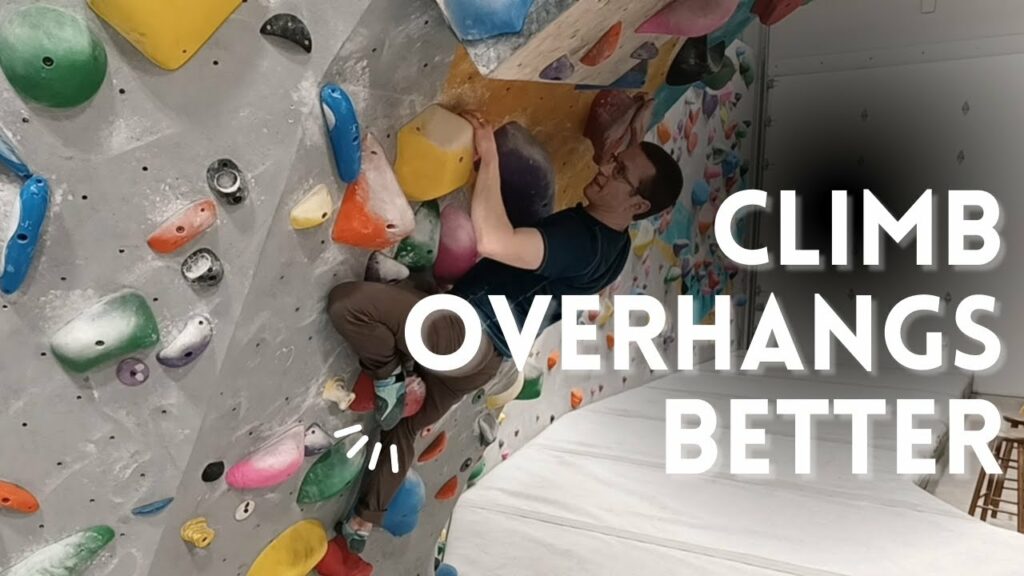
As a professional rock climbing expert with years of experience, I know that overhang climbing requires a lot of upper-body strength and core stability. Without proper training, it’s easy to burn out quickly. In this blog post, I have shared my strategies for building strength and endurance for overhang climbing.
How to train for strength and endurance in overhang climbing
One of the best ways to train for overhang climbing is to incorporate specific exercises that target the muscles used during the climb. I recommend upper-body strength exercises like pull-ups, rows, and shoulder presses to significantly improve strength when climbing difficult overhangs. For core stability, exercises like planks, deadbugs, and Russian twists are recommended to maintain a consistent body position while on the wall.
It’s essential to train both endurance and strength. Endurance training can be as simple as climbing up and down a route repeatedly or doing laps on an easy to moderate overhang. The key is keeping the heart rate up while also increasing muscle endurance.
Recommended exercises and routines
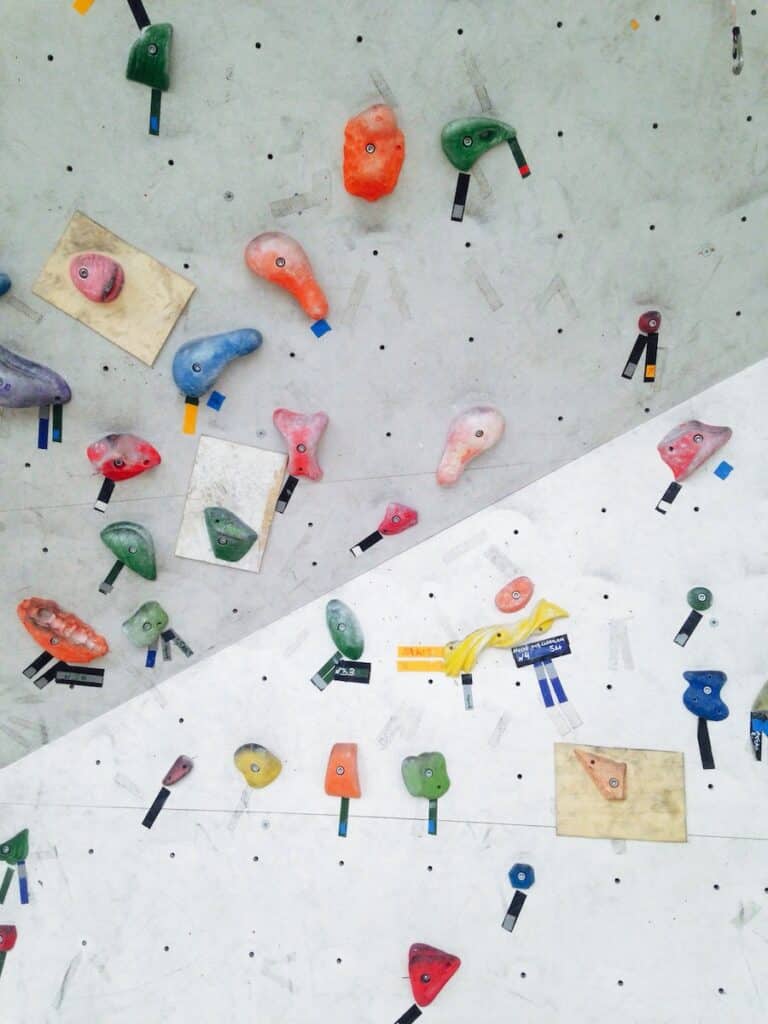
Here are some recommended exercises and routines to help build strength and endurance for overhang climbing:
- Weighted pull-ups – 3 sets of 5 repetitions with heavy weights
- Rows – 3 sets of 8 repetitions with moderate weights
- Shoulder press – 3 sets of 10 repetitions with light to moderate weights
- Planks – hold for 1-2 minutes for three sets
- Deadbugs – 3 sets of 10 repetitions
- Russian twists – 3 sets of 10 repetitions with a medicine ball or weight plate
When it comes to training routines, aim to include strength and endurance exercises three to four times a week. Vary the routes and difficulty levels to challenge yourself and build overall climbing fitness gradually.
Key takeaways for improving your overhang climbing skills
- Building strength and endurance specific to overhang climbing is crucial.
- Incorporate exercises that target the muscles used during the climb, including upper-body strength and core stability.
- Train both endurance and strength to increase overall climbing fitness.
- Include a variety of routes and difficulty levels in your training routine.
Resources for further learning and development
There are many resources available for those looking to improve their overhang climbing skills. Consult with a professional coach or join a climbing gym for structured training programs. Online resources, such as forums and instructional videos, can also be helpful for tips and techniques. Remember to always warm up properly and climb within your abilities to prevent injury.
Conclusion
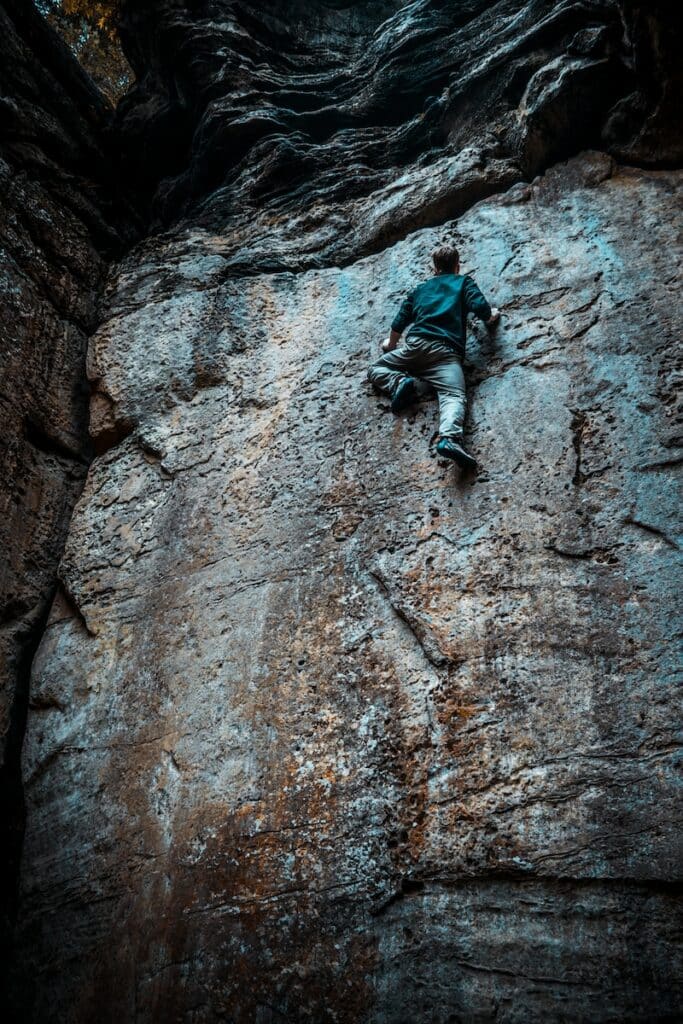
Building strength and endurance is a critical part of overhang climbing success. With a solid training routine that includes specific exercises targeting upper-body strength and core stability, climbers can increase their chances of climbing higher and more challenging overhangs. Remember to train both endurance and strength, vary routes and difficulty levels, and consult with professionals for further development. Happy climbing!

